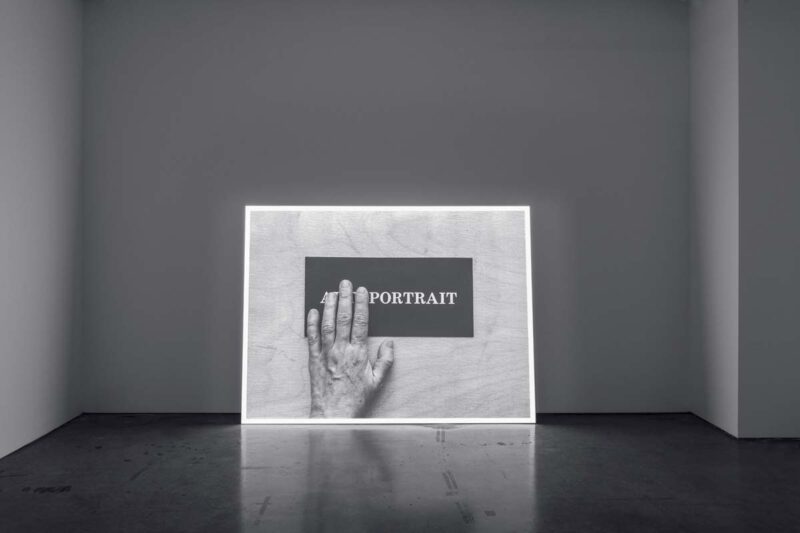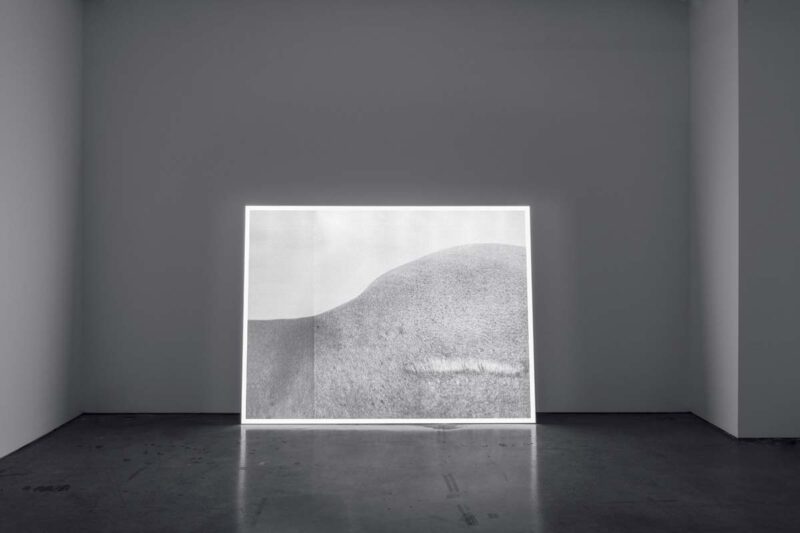[Summer 2024]
by Michel Hardy-Vallée
[EXCERPT]
Sophie Jodoin is an artist of grey nuances. Her range of tones is predictable and her textures are matte – diametrically opposed to the canons of black-and-white photography, in which the world is projected through a scale of contrasts from deep shadows to brilliant reflections. By restraining her palette, Jodoin refines the precision of her works.
During a residency at the Artexte artist-run centre, Jodoin delved into the organization’s archives to produce a looped video installation of a slide show, with a minimalist soundtrack by Karen Trask. The work mixes still images and moving images, between a source and its copy – between an original work and its reproduction by camera, then by photocopier, and then again by camera. Each segment of the video is a discovery. Concentrating on publications by women artists, Jodoin has isolated images or words that she found in them. She clearly shows the different levels of reproduction: the moment when the original was printed; her hand holding it under the camera as she makes a copy; the scratches and imperfections of the photocopier printing the image of the work. The photocopies are collated in a volume that is made available to visitors but would, unfortunately, require endless work of obtaining permissions in order to be published in its own right. It was the Artexte receptionist who gently reminded me to take a glance at it.
As I was arriving I bumped into the photographer Serge Clément, who was getting out of the elevator after seeing the exhibition. He was careful not to say anything that would influence my opinion but left me with a look that seemed to say, “You’ll see!” I understood what he meant as I watched the slide show and found myself wondering, but how was she always able to choose the right image? These days, museology is quite baroque: images are supplemented by artefacts, interactive tools, or a heap of unconventional materials. I entered a gallery with a screen in it. Not just put there, but set at a clearly intentional height and angle. Like people, the images filed by; the screen, positioned on the floor, leaning slightly backward, stared me in the eye. The music accompanying the slides could be summed up in two modulating notes. A white border surrounded the images. Was that all? That was everything.
In a single voice, one after another, all of these excerpts of works produced by 135 women speak of silence and emptiness. I decided that I would consider the first image I saw to be the first in Jodoin’s work, even if that wasn’t so in the hard-copy version. Not knowing exactly how long the slide show would last, I stayed until my first image reappeared. Watching this compilation that articulates women’s pain at having forced into speechlessness, I again wondered how Jodoin had achieved such a result. Each image had its own form of perfection: the composition, the right word, the balance among the different levels of mise en abyme or evocative power. The choices were beyond question.
The works in this imaginary museum were somehow familiar to me, not through direct knowledge but through their ambience, their ethos. These expressions by women took me back to my early memories of art in the 1980s, which I had long misunderstood – until I saw their central theme through Jodoin’s work. It was if she had calculated the differential – or was showing the image that emerges after the points are connected. As a researcher, I would have explained this coherence with a profusion of words; Jodoin’s work immediately interrupted me to say, simply, “You’ll see!”
Conceptual artists used commercial printing to de-aestheticize the photographic image. It was a particular opportunity to appreciate the heyday of lithographic printing – the grain and odour of the page. The aesthetic of the document in Jodoin’s work – the shadow cast around her finger that holds a book, or the handwritten annotations that were left by readers who preceded her – is the narrative of a reading that is taking shape. And it’s the narrative of a cultural continuity seeking to be constructed. The pop music industry understands the importance of broadcasting pieces again and again: before you turn on the radio, take a bet on which song you’ll hear and – surprise! – you win. In the visual arts field, gaining support for creation has been a hard struggle, but the memory of works (especially when the artist has died) remains to be achieved, and that is what Jodoin is trying to do in her own way.
Thanking the receptionist, I left, reeling a little, still wondering, But how did she do that? How did she do it?
Translated by Käthe Roth
—
Michel Hardy-Vallée is a historian of photography and Visiting Scholar at the Gail and Stephen A. Jarislowsky Institute for Studies in Canadian Art, Concordia University. His research is concerned with photography books, visual narration, interdisciplinary practices, and the archive, in the contexts of Quebec and Canada. He is currently working on a monograph about John Max.
—
[ Complete issue, in print and digital version, available here: Ciel variable 126 – TRAJECTORIES ]
[ Complete article, in digital version, available here: Sophie Jodoin, d’un seul souffle – Michel Hardy-Vallée
]



